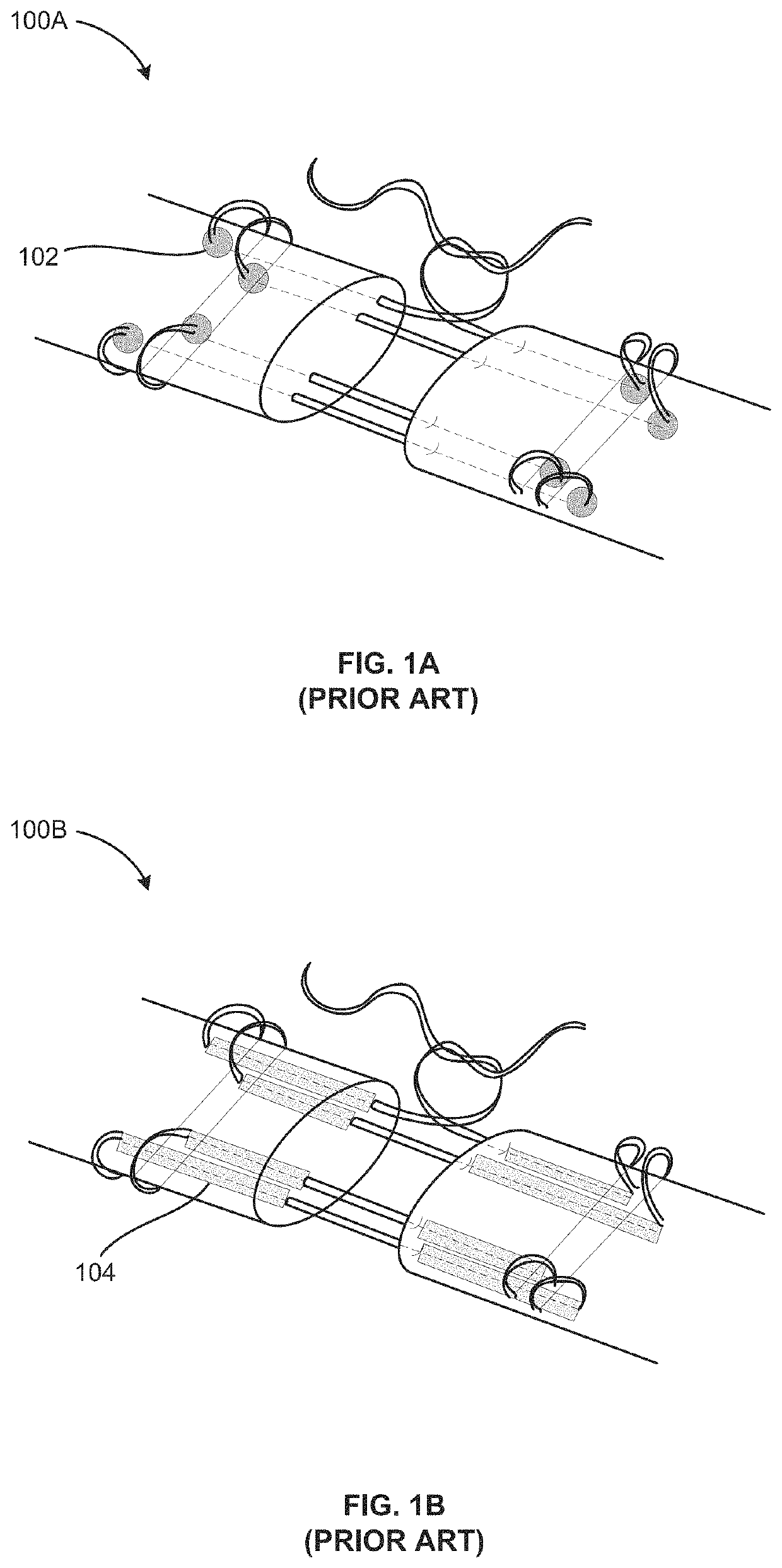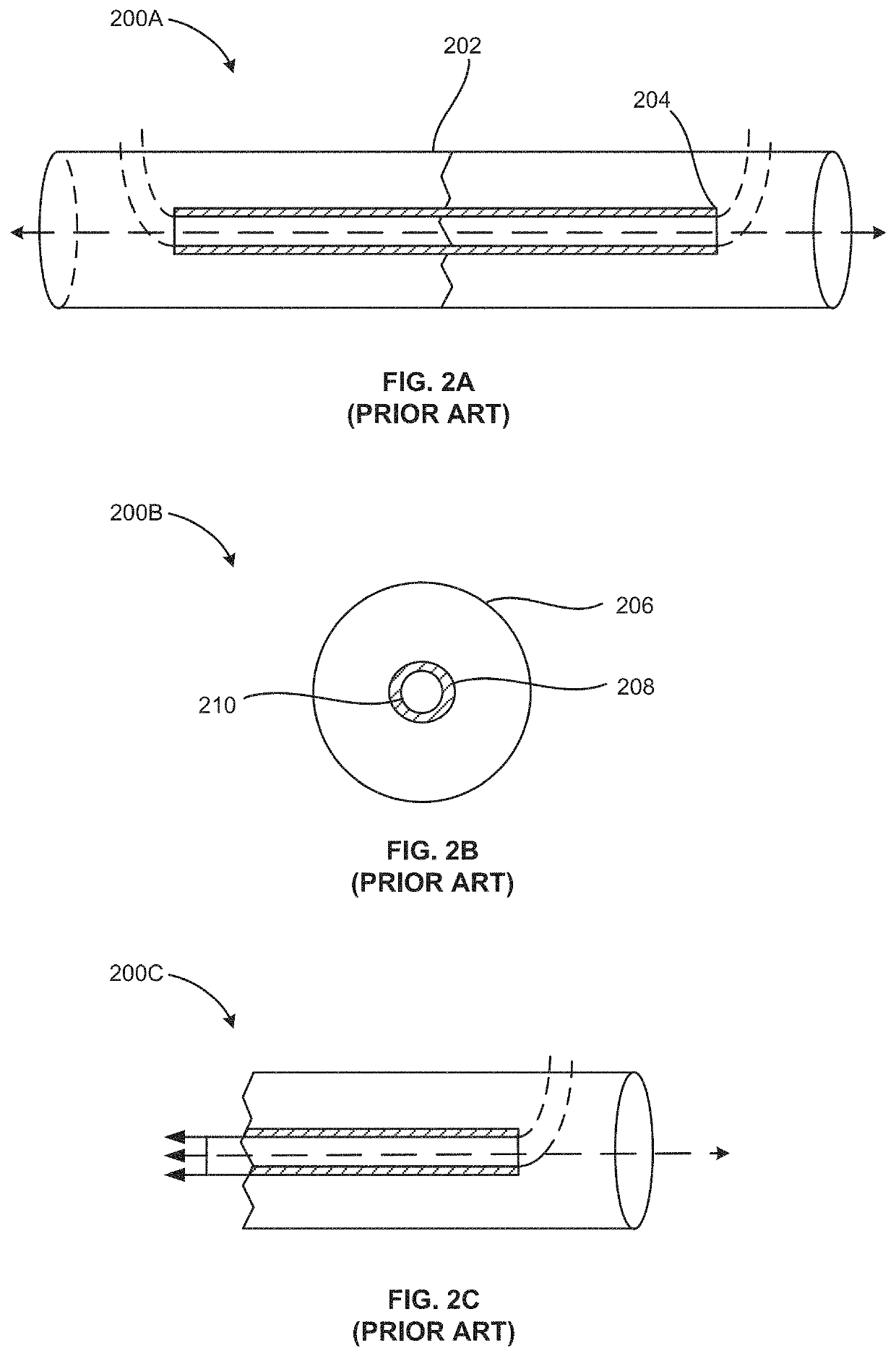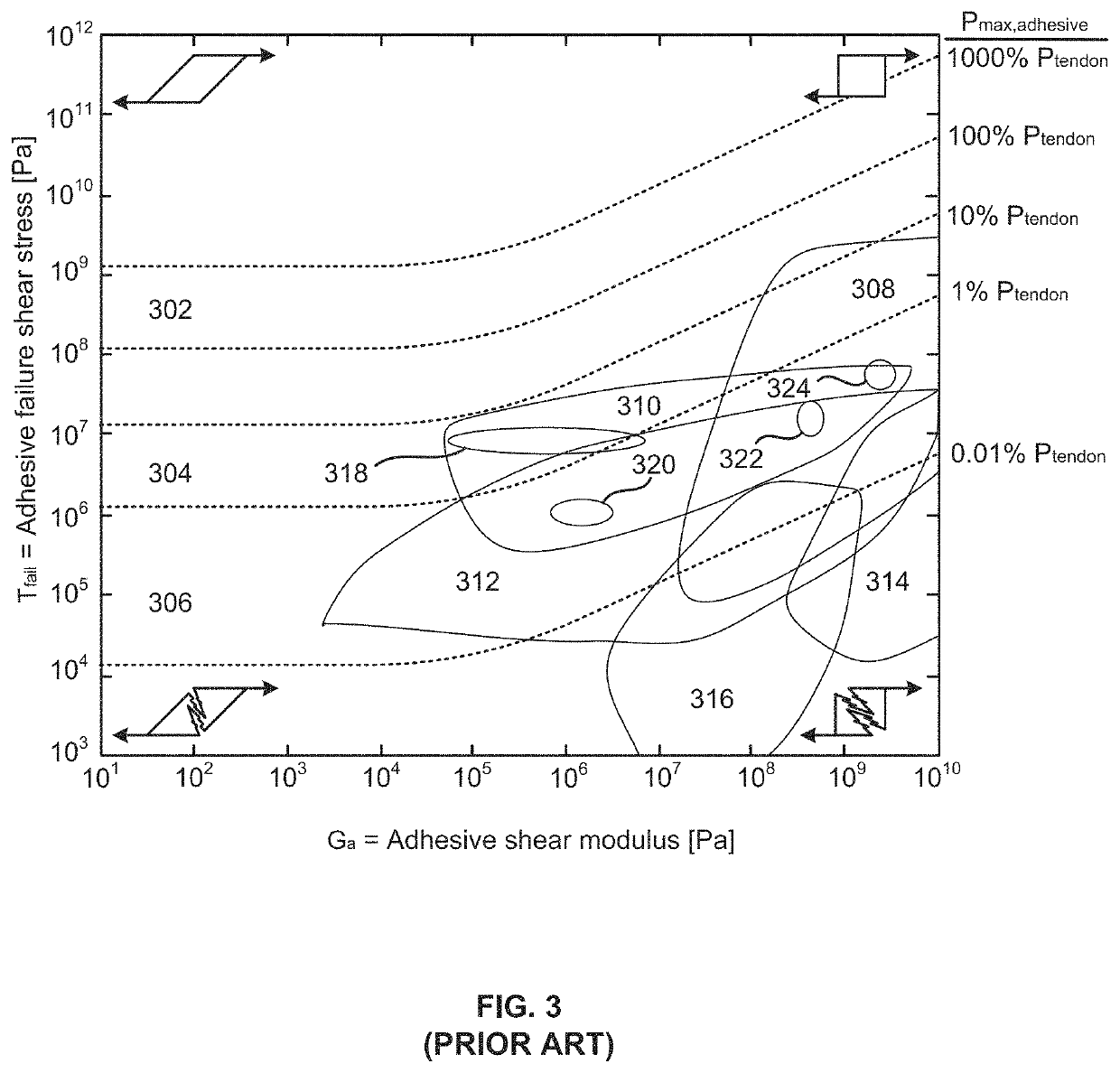Compostions and methods for tissue repair
a tissue defect and composition technology, applied in the field of compositions and methods for repairing tissue defects, can solve the problems of suture failure, suture failure, and soft tissue near the suture anchor point tear, so as to improve the overall repair mechanics, reduce peak stress, and increase the surface area for load transfer.
- Summary
- Abstract
- Description
- Claims
- Application Information
AI Technical Summary
Benefits of technology
Problems solved by technology
Method used
Image
Examples
example 1
to Predict Desirable Adhesive Properties for Rotator Cuff Repair
[0136]This Example identifies adhesives with desirable properties for tendon-to bone repair using a shear lag model, with the results corroborated by a finite element model. The model predicted load sharing across an idealized tendon-to-bone insertion site using an interposed adhesive layer at the interface. The idealized repaired tendon and bone were both modeled as isotropic, homogenous tissue planks. As an example tendon-to-bone repair, the rotator cuff supraspinatus insertion into the underlying humeral head bone was modeled with an adhesive film interposed between the tendon and bone (FIG. 6).
[0137]The shear lag model predicted that mechanically desirable adhesives would be of millimeter-scale thickness and compliant in shear while maintaining high binding and shear strengths. This combination of properties minimizes stress concentration and maximizes load transfer across the repair (FIG. 11 yellow shaded region, a...
example 2
Bone Adhesive Film
[0174]The following example describes the development of adhesive biomaterials to improve load distribution of repairs, evaluation of biocompatibility, and assessment of surgical outcomes in large animals. The film shifts the load from a few anchor points to shear along the entire adhesive sheet which minimizes stress concentrations at the repair site.
[0175]Development of Adhesive Biomaterials
[0176]Adhesive biomaterials distribute stress and improve load transfer. Interfacial binding to tendon can be achieved through factors such as the following:
[0177]NHS-ester chemistry
[0178]Enzymatic reaction: Transglutaminase
[0179]Peptide based binding—QCM (Initial results are not promising)
[0180]Acrylates
[0181]Enzymatic reaction: Peroxidase+H2O2
[0182]Catechol / dopa chemistry
[0183]“Tissue welding”
[0184]A specific NHS chemistry is the following.
[0185]
Amine specific binding works in slightly basic conditions, binds the N-terminus of peptide, and Lysine ε-amine. Lysine's ε-amine g...
example 3
Ex Vivo Tendon-to-Bone Plank Tests
[0192]Experimental Methods Section
[0193]New Lap Shear Testing Method:
[0194]Lap shear tests are a standard method to determine adhesive mechanical properties for engineering applications; however, the applications described herein require binding to biological tissues instead of metal or plastic adherends. In order to evaluate adhesive properties with relevant adherends and assess adhesive usefulness for tendon-to-bone repair, a new method for lap shear testing using tendon and bone planks was developed (FIGS. 12A-12B). Tendon plank fabrication using a sliding microtome and a sacrificial teflon piece to measure thickness enabled creation of highly uniform, geometrically standardized planks. Pilot experiments demonstrated that tendons needed to be planed on both sides and curved edges removed to create the desired width of 15 mm for testing. Otherwise, the curvature in the tendon samples created a non-uniform thickness that amplified stresses in some ...
PUM
 Login to View More
Login to View More Abstract
Description
Claims
Application Information
 Login to View More
Login to View More - R&D
- Intellectual Property
- Life Sciences
- Materials
- Tech Scout
- Unparalleled Data Quality
- Higher Quality Content
- 60% Fewer Hallucinations
Browse by: Latest US Patents, China's latest patents, Technical Efficacy Thesaurus, Application Domain, Technology Topic, Popular Technical Reports.
© 2025 PatSnap. All rights reserved.Legal|Privacy policy|Modern Slavery Act Transparency Statement|Sitemap|About US| Contact US: help@patsnap.com



